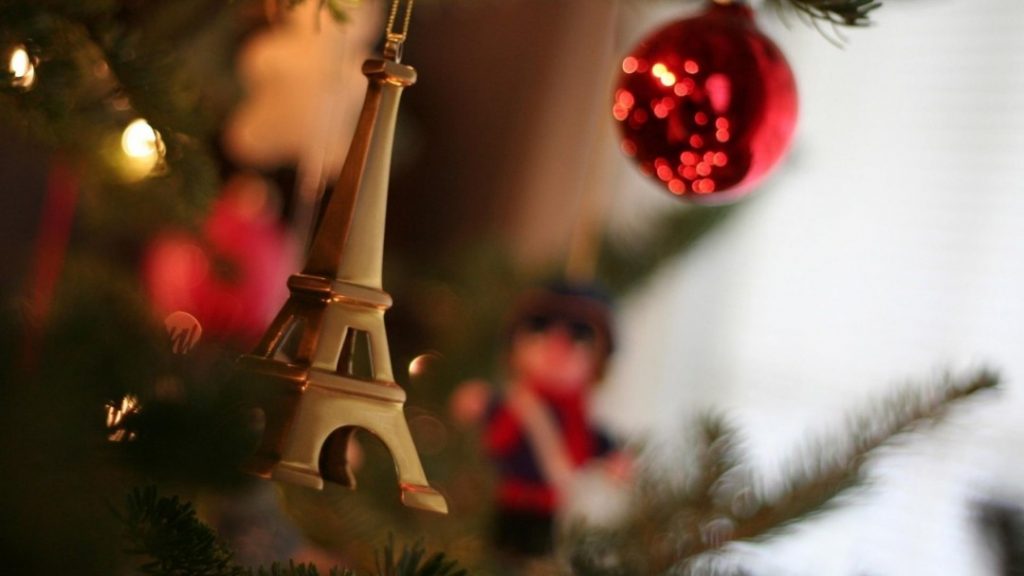
French people have the cred of doing things differently from the rest of the world. Hence their Christmas celebration is also different. The people of France have their own set of Christmas traditions, which they have held on to over the years. Unlike the British, French people do not have Boxing or St’ Stephen’s Day. Rather, their celebration stretches for weeks, not just two days. So if you’re wondering how the French celebrate Christmas, you’re at the right place. Below we discuss Christmas traditions in France in detail.
Christmas Traditions In France:
Christmas, called Noel in France is derived from the French term ‘les bonnes Nouvelles’ meaning ‘the good news’. It’s the time when the entire family joins into holiday and worship. French people start preparing for Christmas four weeks before the primary day. On the 1st of December, kids open the first door or window in the Advent calendar. This tradition, though not exclusive to France, makes the kids hyper-excited about the upcoming Christmas events. People also start with their decoration.
Christmas Decorations In France:
La Crèche:
Nearly every house in France, especially in Provence displays a native scene called La Crèche during the Christmastime. The crèche or nativity scene includes a pretty arrangement of little figurines and buildings surrounding the crib. Santons or little saints made of clay are the most important members of this crèche. These include Baby Jesus, Mary, and Joseph, the angels, shepherds, animals, village people, Magi, shepherds, and animals also surround the crèche. The villages represent a lot of different professions such as baker, farmer, washerwoman, hunter and so on. This tradition has been passed from generations to generations since the 17th century.
Christmas Tree:
Unlike other regions in the world, the Christmas tree has never been a favorite in France. Yet, some people put up a Christmas tree in the house. French people often decorate the tree a few days before the Christmas eve so that they get plenty of time to wrap up other chores.
Christmas Dining Table Decoration:
Christmas dining table decoration is given extreme importance in France. They make the table inviting and elegant by placing three candlesticks on the table that represent the Trinity. Another interesting French tradition is tying the ends of the tablecloth so that the Devil does not get under the table.
The Midnight Mass In France:
The tradition of midnight mass continues to live on in France even after centuries. The family fasts and all day and then everyone, except the young kids, go to the midnight mass. The country has some of the most stunning cathedrals, which are packed to the rafter for a midnight mass. The carolers sing carols and hymns in the church to get everyone in the festive mood. And it even works up an appetite, which is another plus. There aren’t many French Christmas carols, which is why Christmas songs sung in French churches are taken from Germany and United Kingdom. Some non-religious songs are also translated from different languages into French.
Christmas Eve In France:
In southern France, people burn logs in their homes from Christmas Eve to New Years. The log is first sprinkled with red wine and then burnt so that it emits a wonderful scent. It was believed that burning a part of the log would ensure good luck for the next year’s harvest. People have not stopped following this tradition ever since.
After the Christmas Eve dinner, the family retires to bed, leaving food and drink on the table and fire burning, in case Virgin Mary calls in. Kids even leave their shoes or sabots by the fireplace or in the hearth of the Christ Child for Pere Noel or Santa Claus. In the morning, they find nuts, sweets and small toys in their stockings.
Christmas Celebrations In France:
Parades are the highlight of almost all the French towns. The parades with gorgeously decorated floats enact the arrival of Saint Nicholas and his companion, le Père Fouettard.
In Saint-Nicolas-de-Port, one of the French town, a parade is organized on the 6th of December from Saint Nicholas to the Town Hall, where the town Mayor welcomes the saint officially and hands over the ‘ley of the city’ to him. After the ceremony, there’s a major firework display, commemorating the vent.
Lyon organizes a full-fledged festival of light, known locally as La Fête des Lumières. This four-day festival starts on 5th of December and continues until the 8th of December.
8th December is a celebration to honor the Virgin Mary. During this festival, everyone places candles on their window sills. Even the streets are decorated with illuminations and buildings are lit up with colorful lights.
Les Cadeaux de Noël:
It’s time for presents now! Kids typically open their presents on the morning of Christmas. In Northern France, kids are given out gifts on St. Nicholas’ Day, which falls on the 6th of December, not on the Christmas Day. The adults share gifts with each other on New Year’s Day.
French Christmas Foods:
Le Réveillon:
Christmas feast, called le reveillon in France is the most important meal of the year for Frenchmen. It’s basically a late supper held after the midnight mass on every Christmas Eve. The menu of the meal varies according to the culinary tradition of the region. In Burgundy, turkey with chestnuts is usually the main course, while in Alsace, goose rules the roost. The Parisians also feast on pat de foie gras and oysters on the Le Reveillon. The use of log for decoration may have faded, but Yule log cake, called the Buche de Nol, is very popular. Apart from these salads, fruit, ham, cake and wine are also popular.
Les Treize Or 13 Desserts:
Les Treize is a Provençal French Christmas tradition, but is still worth mentioning as it involves eating 13 desserts after the main Christmas feast. This tradition symbolizes Christmas and his 12 apostles at the Last Supper. The desserts included in this tradition are nuts, fruits, sweets, dried fruits such as walnuts, figs, hazelnuts, dried grapes or Pompe à l’huile, a cake. This tradition involves people tasting each of these 13 desserts to have a good and prosperous year ahead.
The Papillotes:
The papillotes are basically chocolates or candied fruit wrapped in colorful and shiny papers with fringed ends. The chocolate also includes a little note, which features a beautiful Christmas message. Papillote was created at the end of the 18th century in Lyon. But now, these rich and delicious treats are available abundantly in every part of France. Papillotes are usually used to decorate the Christmas table or are filled with stockings.
La Galette des Rois:
La Galette des Rois or the ‘king’s cake’ is made to celebrate Epiphany in France. There are three different versions of this cake, the most popular being flaky puff pastry layers filled with apple or frangipane. Another form of La Galette des Rois is ‘sablé galette’, a type of brioche cake, and sweet crust pastry filled with sugar and candied fruits. These cakes are usually sold in bags, which also include a paper crown for the king of the family. Traditionally, the youngest member of the family distributes the cake by hiding under the table and shouting the name of the person supposed to get the piece. In earlier times, French families would make and serve Three Kings Cake with a bean hidden in it. The person who found the bean was made the Queen or King for the day.
You May Also Like To Read:
- Christmas Traditions In Germany
- Christmas Traditions In Ireland That Will Surprise You
- Christmas Traditions In America
Christmas Crackers:
Christmas cracker, invented by Tom Smith in the 19th century was inspired by this visit to Paris when he came across the French ‘bonbon’ sweets, which are basically almonds wrapped in beautiful papers. When he returned to London, Tom Smith started selling them by including motto message inside. Later, his sons added small gifts and paper crowns in the crackers. Eventually, crackers became highly popular in England, but sadly could never become a part of French Christmas tradition.
Postcards from Père Noël:
Thankfully, the letters that the kids write to Father Christmas or Santa Claus are not deposited to drawers or dustbins. In 1962, the French government passed the law that any letter written to Santa Claus must be responded in the form of postcards. Yup, we know that it boosted the myth of Santa Claus, but we think it’s quite cute on their part.
Father Slapper:
Father Slapper has had a couple of different incarnations in the countries across Europe, but in North and East France, he’s known as Père Fouettard. It’s believed that Father Slapper would accompany St. Nicholas and spank naughty kids with his whip.
Christmas Shopping:
This one’s more of a habit, than tradition. Unlike people of other countries and even continents, French do not go bananas over shopping. French people believe in quality, not quantity. They shop at traditional Christmas markets as much as in from deluxe stores.
Christmas Markets:
Christmas markets, though not exclusive to French tradition, are highly popular in France. The artisans of French towns and villages produce gifts, decoration and local culinary delicacies such as confit de canard and foie gras to sell in the market. Christkindelsmärik is the oldest and most famous Christmas market in France.
What do you feel about these Christmas traditions in France? Which of these French Christmas traditions is your favorite? Let us know by commenting below.

